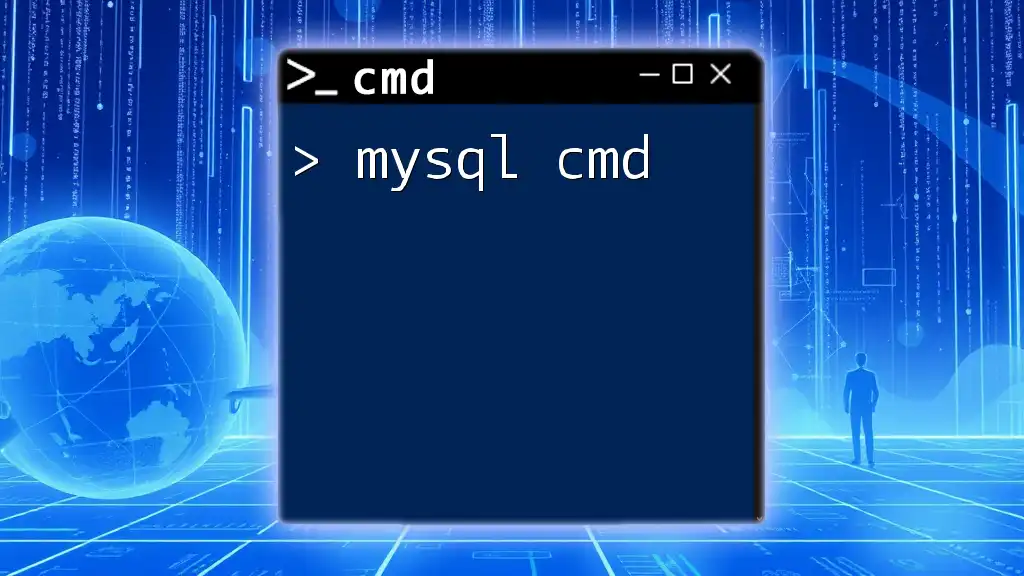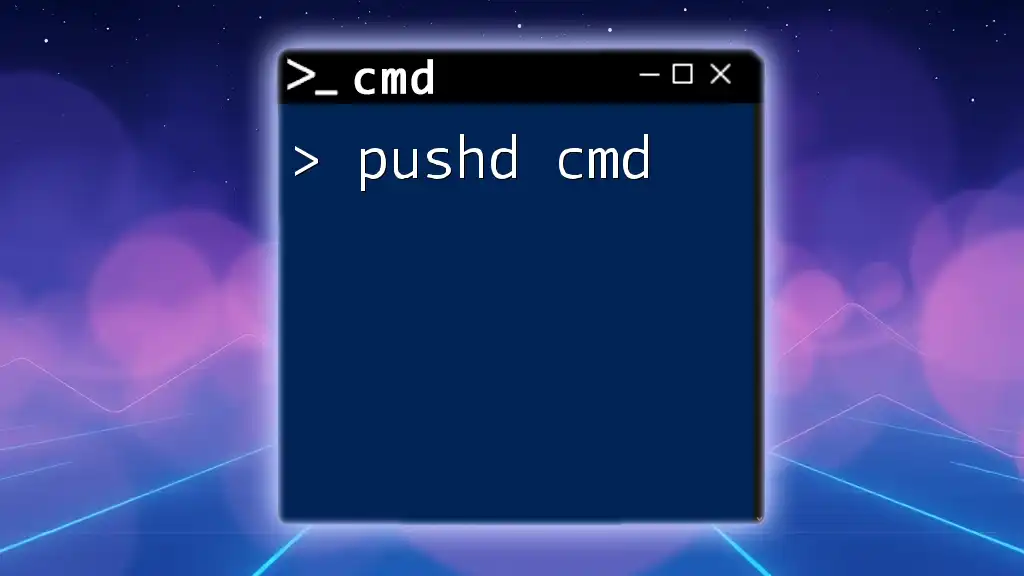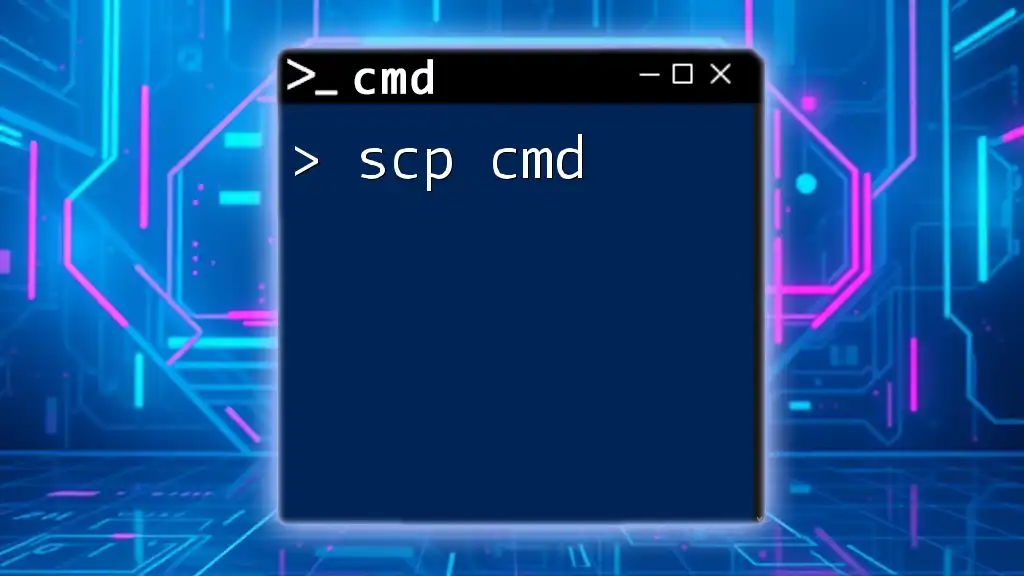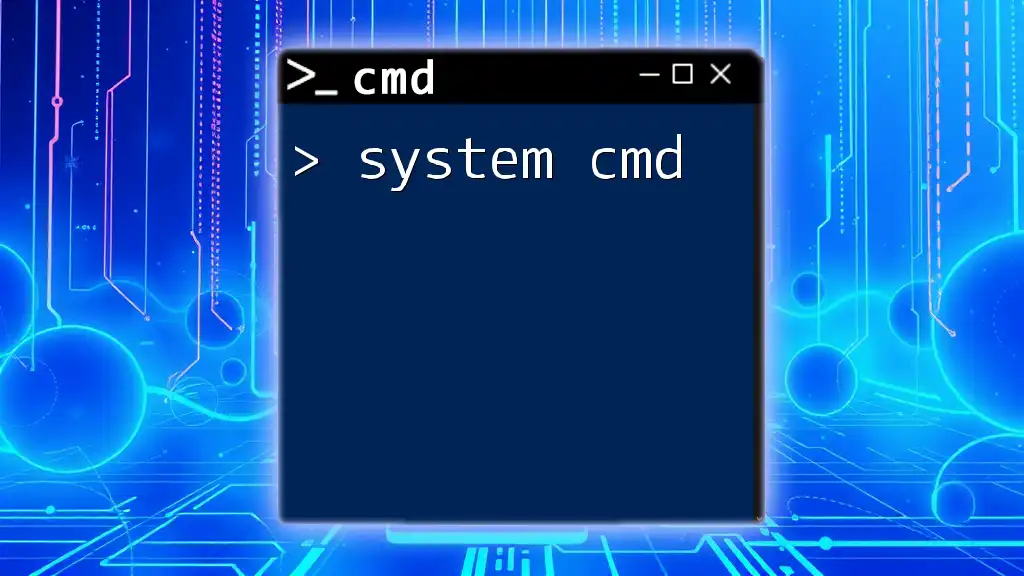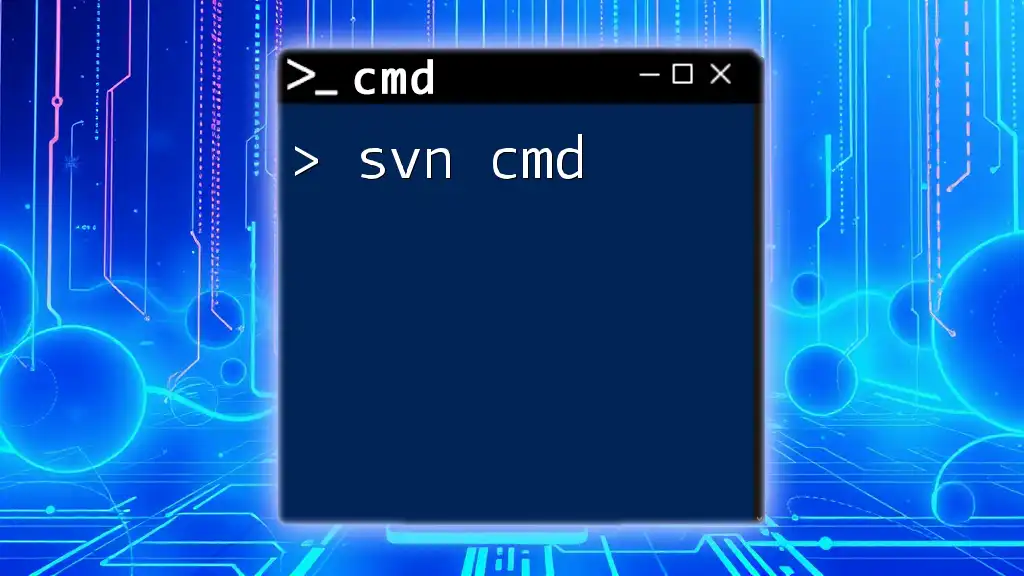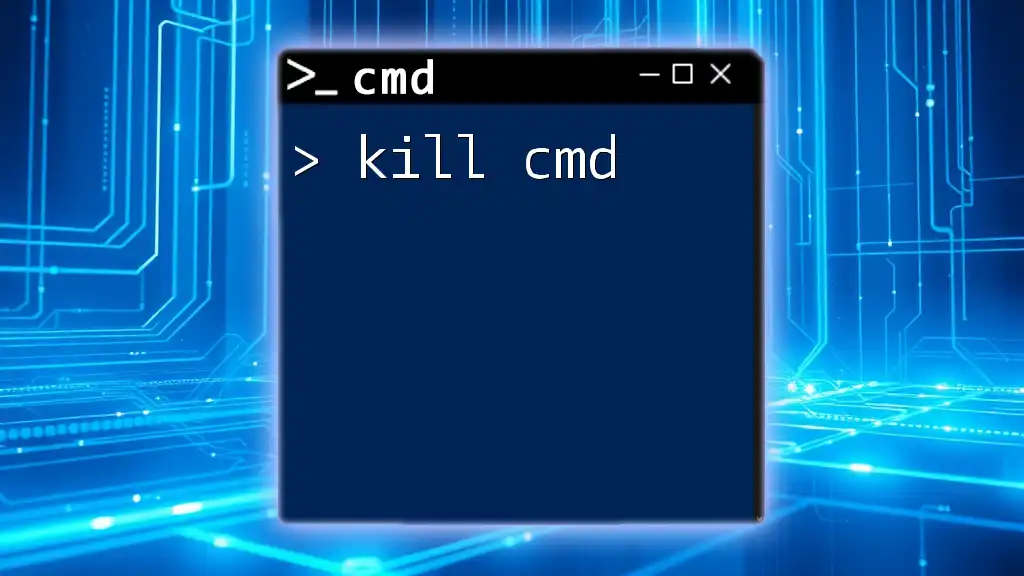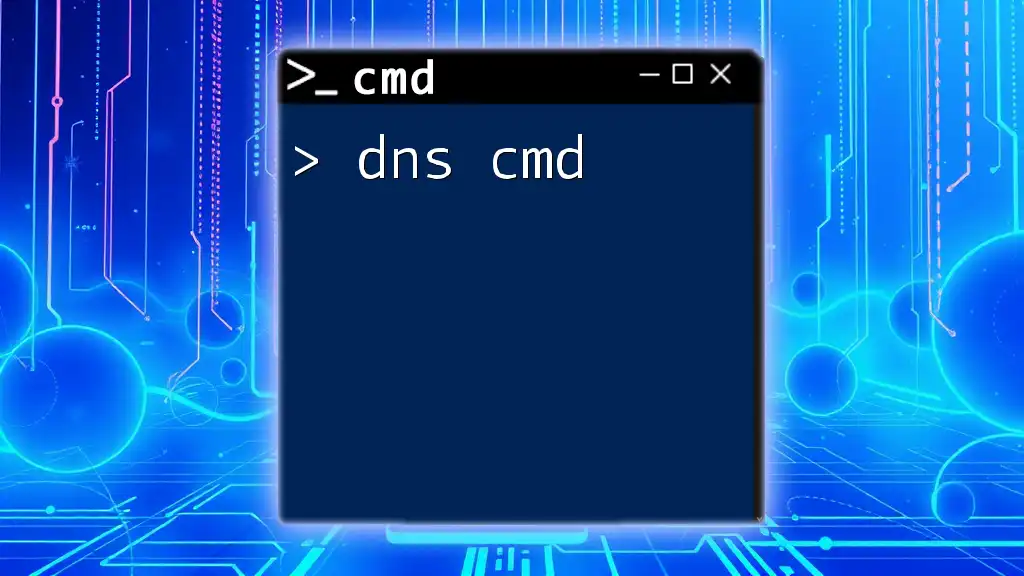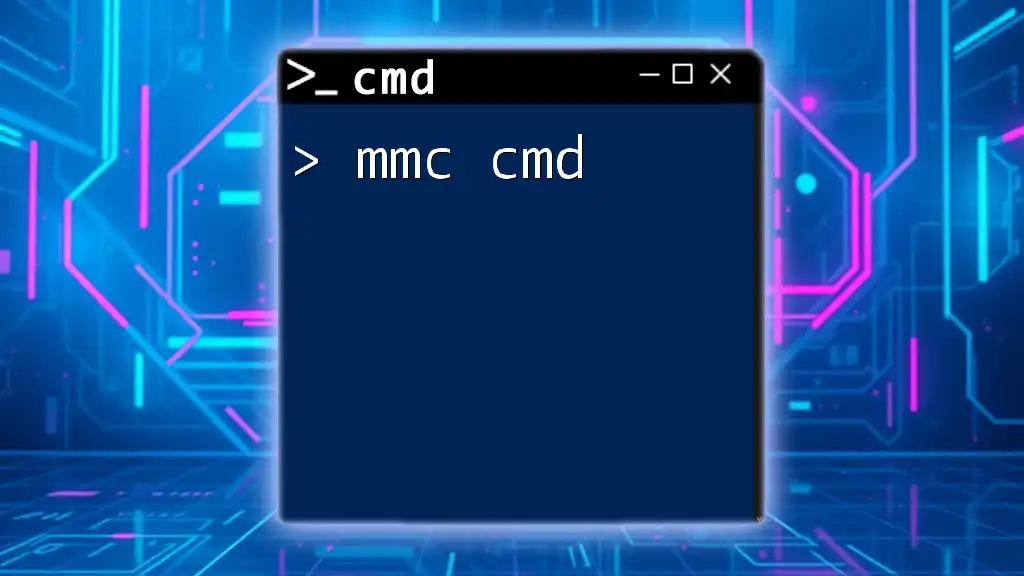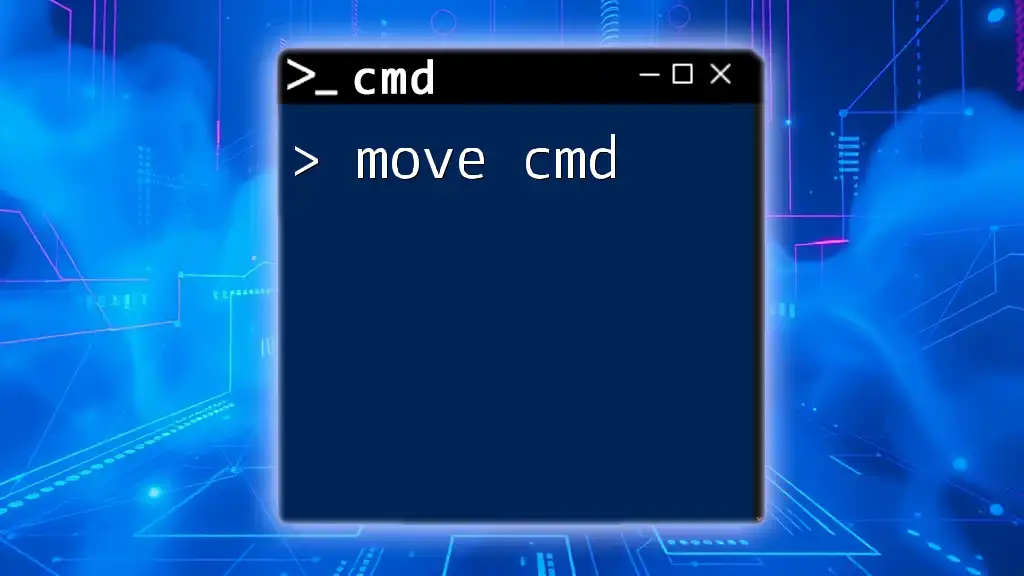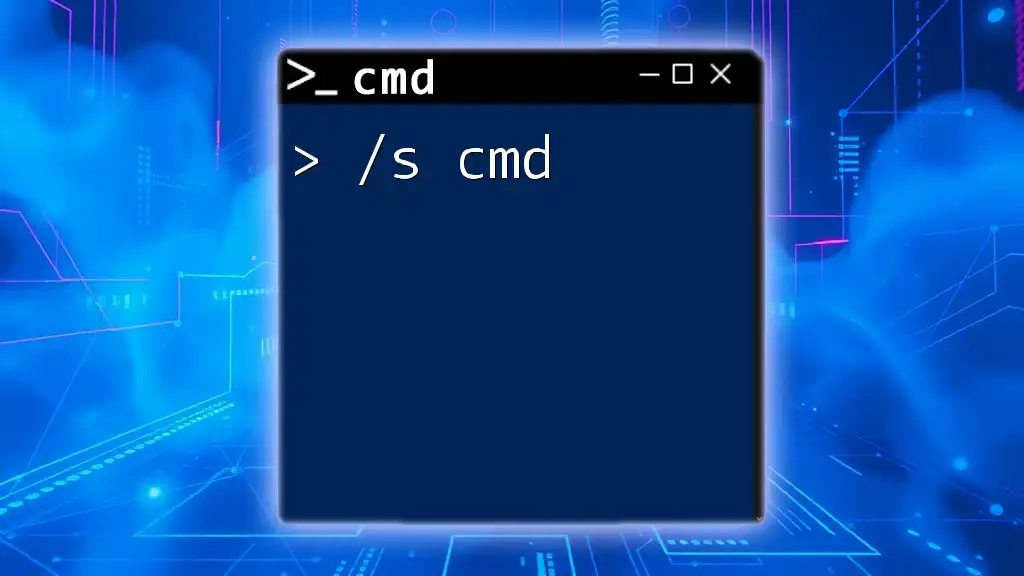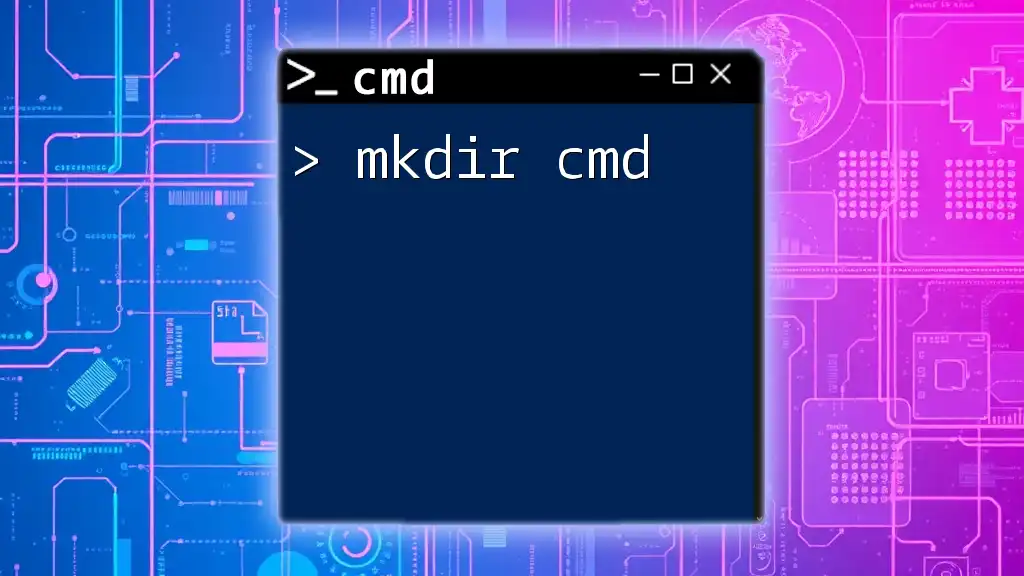MySQL CMD refers to the command-line interface for MySQL, which allows users to interact with the MySQL database using various commands for tasks such as querying data, managing databases, and performing administrative functions.
Here's an example of a command to connect to a MySQL database:
mysql -u username -p database_name
What is MySQL CMD?
MySQL CMD (Command Line) is a powerful interface for managing MySQL databases through command-line instructions rather than through a graphical user interface. The command line provides a more straightforward and efficient way for database administrators and developers to interact with their databases, perform operations, and execute complex tasks.
While graphical interfaces like phpMyAdmin or MySQL Workbench offer user-friendly options, MySQL CMD allows for greater flexibility and speed. Many experienced developers prefer using MySQL CMD, especially when handling large datasets or automating repetitive tasks.
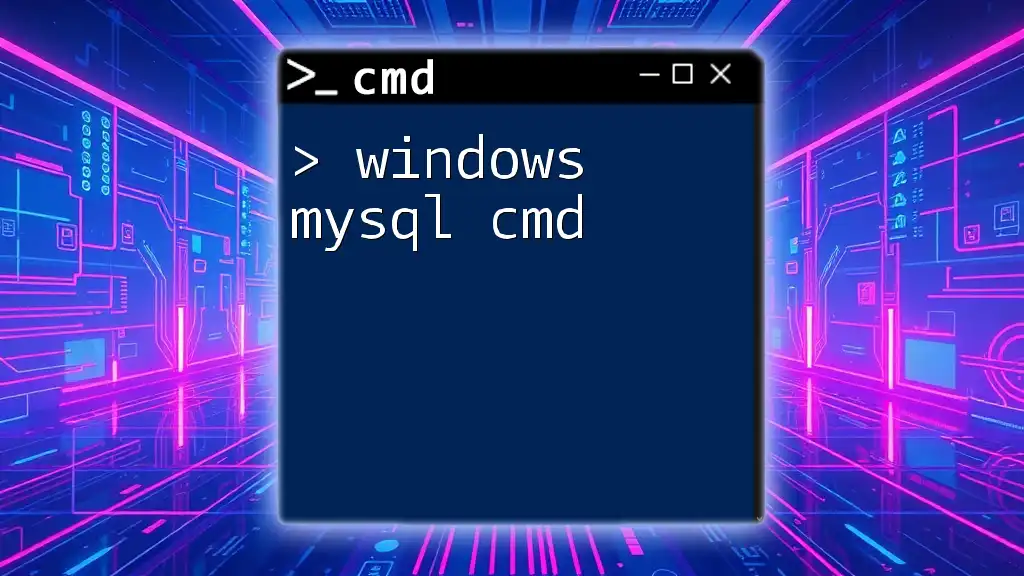
Getting Started with MySQL CMD
Installing MySQL
To begin using MySQL CMD, you must first install the MySQL server on your system. Here are the general steps, along with specific commands for various operating systems:
-
Download MySQL from the [official MySQL website](https://dev.mysql.com/downloads/).
-
Follow the installation instructions for your specific operating system:
- Windows: Run the installer and follow the prompts. Once installed, you can find the Command Prompt app to access MySQL CMD.
- Linux: You can install MySQL via package managers. For instance, on Ubuntu, you would use:
sudo apt update sudo apt install mysql-server - macOS: Using Homebrew, install MySQL with:
brew install mysql
Accessing MySQL CMD
After installing MySQL, you can access the CMD from different operating systems:
-
Windows: Open Command Prompt and type:
mysql -u username -pReplace `username` with your MySQL username.
-
Linux/macOS: Open Terminal and enter the same command:
mysql -u username -p
When prompted, enter your password. This command will log you into the MySQL shell where you can execute various commands.
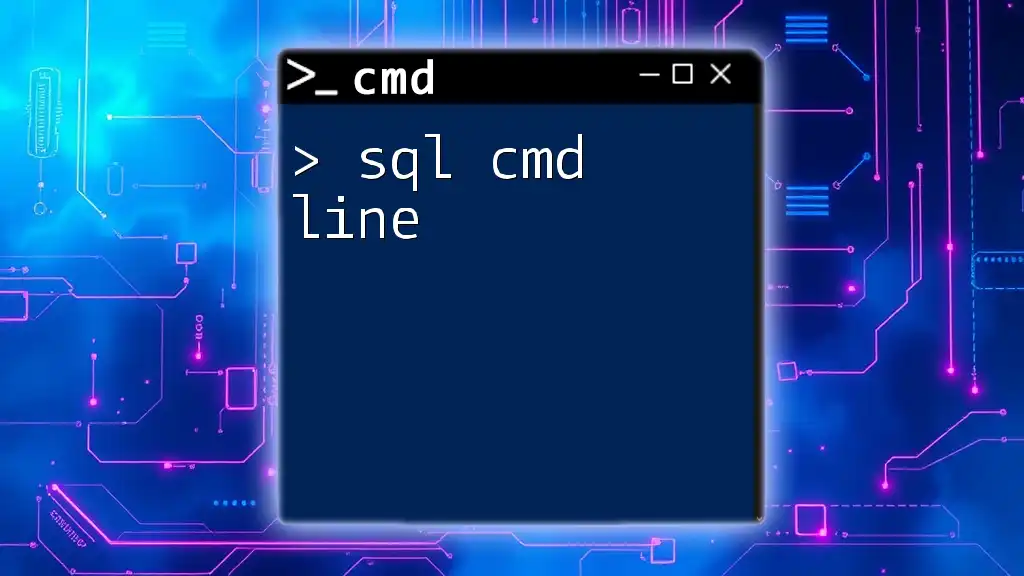
Basic MySQL Commands
Connecting to a Database
Once you’re logged in, it's essential to understand how to navigate databases. Start by showing available databases using:
SHOW DATABASES;
This command lists all databases, helping you decide which one to work with.
Creating a Database
To create a new database, you can use:
CREATE DATABASE database_name;
In this command, replace `database_name` with a unique name for your database. Ensure there are no spaces or special characters in the name to follow naming conventions.
Selecting a Database
After creating or identifying the database you want to use, select it for your session with:
USE database_name;
This command sets the context for your subsequent queries and operations within that specific database.
Basic CRUD Operations
Creating a Table
To create a new table within your selected database, use the following syntax:
CREATE TABLE table_name (
column1 datatype,
column2 datatype,
...
);
For example, to create a table for storing user information:
CREATE TABLE users (
id INT AUTO_INCREMENT PRIMARY KEY,
name VARCHAR(100),
email VARCHAR(100)
);
Understanding the various datatypes (e.g., `INT`, `VARCHAR`, `TEXT`) is crucial for defining the structure of your tables accurately.
Inserting Data
Once a table is created, you can insert data into it with:
INSERT INTO table_name (column1, column2) VALUES (value1, value2);
For example:
INSERT INTO users (name, email) VALUES ('John Doe', 'john@example.com');
Reading Data
To retrieve data from a table, use the `SELECT` command:
SELECT * FROM table_name;
This command fetches all rows from the specified table. You can also specify certain columns:
SELECT name, email FROM users;
Updating Data
To modify existing records, the `UPDATE` command is your best friend:
UPDATE table_name SET column1 = value1 WHERE condition;
For example, to change a user’s name, you could write:
UPDATE users SET name = 'Jane Doe' WHERE email = 'john@example.com';
Deleting Data
If you need to remove records, use the `DELETE` command:
DELETE FROM table_name WHERE condition;
For example, to delete a user:
DELETE FROM users WHERE id = 1;

Advanced MySQL CMD Features
Joining Tables
JOIN operations allow you to combine rows from two or more tables based on related columns. Here’s a helpful example:
SELECT a.column_name, b.column_name
FROM table_a a
JOIN table_b b ON a.common_column = b.common_column;
Understanding different types of JOINs (INNER, LEFT, RIGHT, OUTER) is crucial for complex data retrieval.
Using Functions
MySQL includes built-in functions for various operations. For example, you can count the number of entries in a table:
SELECT COUNT(*) FROM users;
This simple command provides a quick look at how many users are stored in your `users` table.
Data Manipulation with Transactions
Transactions are essential when executing multiple SQL commands as a single unit. Use the following commands to manage transactions:
START TRANSACTION;
-- Your SQL commands here
COMMIT;
If something goes wrong, you can undo any changes with:
ROLLBACK;
Transactions ensure that your database remains consistent, even in the case of errors.

Tips for Effective Use of MySQL CMD
To become proficient with MySQL CMD, consider the following tips:
- Keyboard Shortcuts: Familiarize yourself with shortcuts to navigate command history effectively.
- Help Command: Utilize the `\h` command to access help in the MySQL shell, which provides information on available commands and their syntax.
- Performance Optimization: Using the `EXPLAIN` command before your SELECT statements can help pinpoint performance bottlenecks in complex queries.
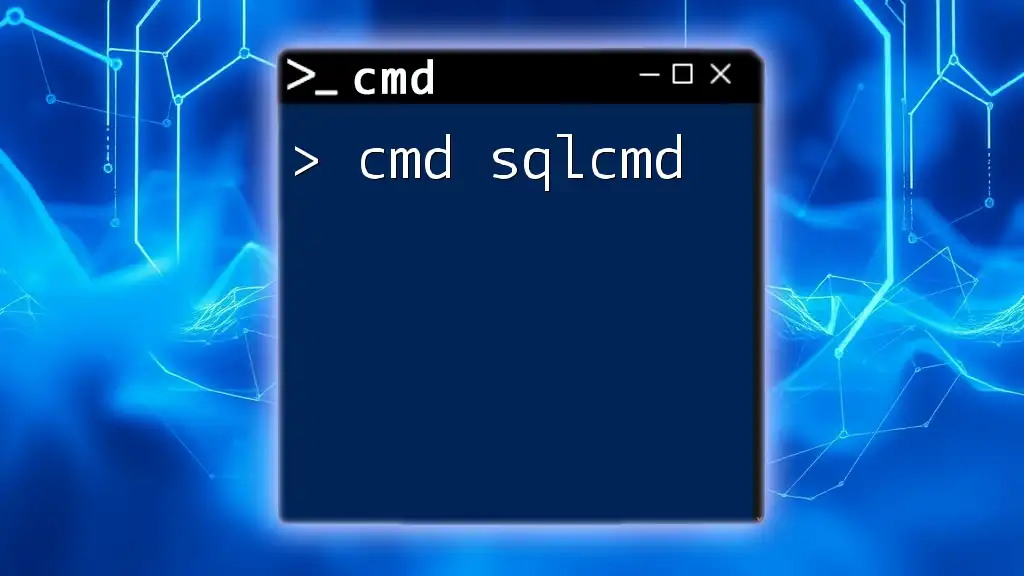
Troubleshooting Common MySQL CMD Issues
Connection Errors
At times, you may encounter connection errors. Common causes include incorrect usernames or passwords. Always double-check your login credentials. An example error message might look like this:
ERROR 1045 (28000): Access denied for user 'username'@'host' (using password: YES)
You can resolve this by ensuring you’re using the right database password.
Syntax Errors
Syntax errors are frequent headaches for beginners. Common mistakes include missing commas or typos in command structure. For example:
SELECT FROM users; -- This will raise a syntax error because you need to specify columns
Always double-check your SQL syntax and refer to the MySQL documentation for correct usage.
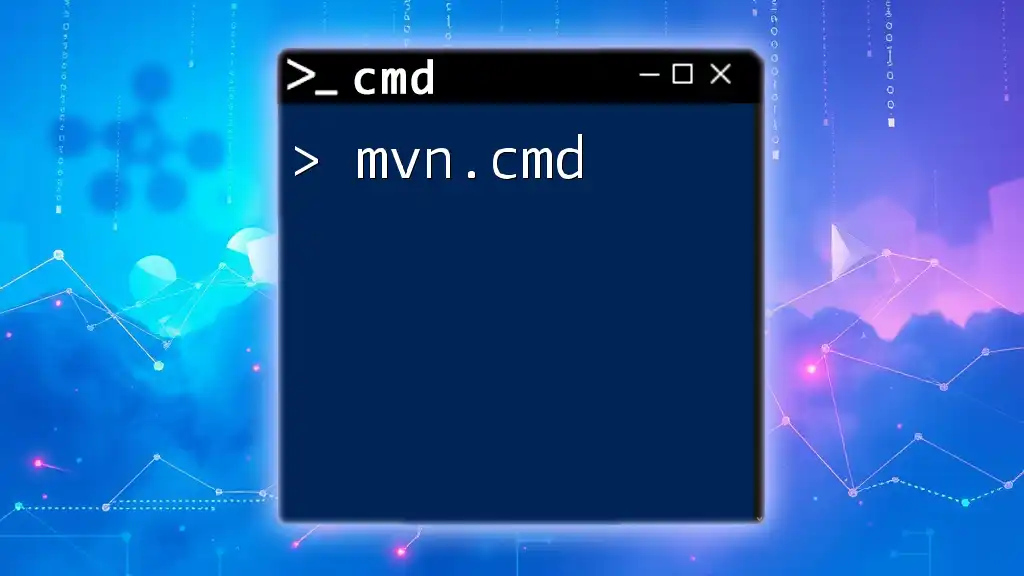
Conclusion
Mastering MySQL CMD is vital for anyone serious about database management. The command-line interface offers powerful control over database operations, significantly improving your efficiency and effectiveness. By practicing these commands and concepts regularly, you will enhance your skills and deepen your understanding of MySQL.
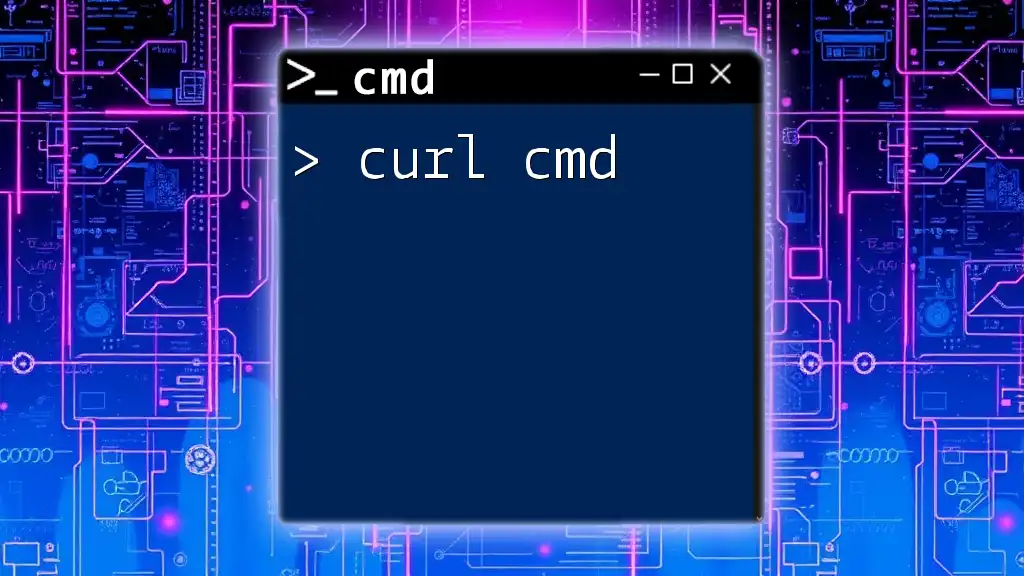
Further Resources
For additional learning, consider referring to the official [MySQL documentation](https://dev.mysql.com/doc/), engaging with online tutorials, books focused on MySQL, and participating in community forums for support and knowledge sharing.

